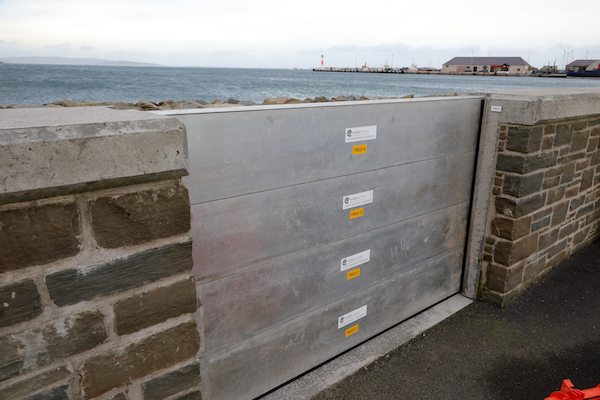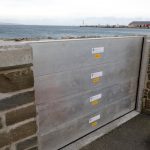

Orkney group to highlight sea level rise

A group of Orcadian climate activists are aiming to draw attention to the threat of rising sea levels to island communities like their own. This Saturday’s creative demonstration will involve a human chain waving blue banners to symbolise sea level rises. By doing so, Orkney Climate Action aims to send a visual message to UK politicians and world leaders.
“As island communities, we can see our climate changing. Coastal roads are overtopped by storm surges more regularly and the shorelines are eroding faster than before. We need a transition away from fossil fuels to end the melting of glaciers and ice caps that is feeding sea level rises. The COP26 summit in Glasgow next month needs to make firm commitments to tackle emissions and protect island communities worldwide” said a spokesman for the group.
Orkney Climate Action was recently set up with COP26 in mind, to put climate change back on the agenda of both locals and politicians. Although several key countries have refused to send delegates, COP26 is a major gathering of leaders, following on from years of work since the Kyoto Protocol was signed in 1997. The COP21 summit in 2015 created the Paris Agreement, which committed nations to a 1.5°C total temperature rise. Unlike the Kyoto Protocol, the Paris Agreement left
out binding targets in individual countries.
“Lots of people are making an effort to cut their personal CO2 contributions, both here in Orkney and worldwide. Yet governments and major industries are promising too little and delivering less. Plans to approve further fossil fuel exploitation in the North Sea are directly at odds with what the UK government is saying, just when it should be sending a clear message to visiting world leaders in Glasgow” said event organiser Graham.
The event will start at 12noon on Saturday, October 30, with participants gathering in Ayre Mills car park, before spreading out in a human chain towards the town centre along the cycle path and sea flood defences by Ayre Road. Ayre Road was chosen as the location because of its risk of permanent flooding if sea ice melting continues unabated.